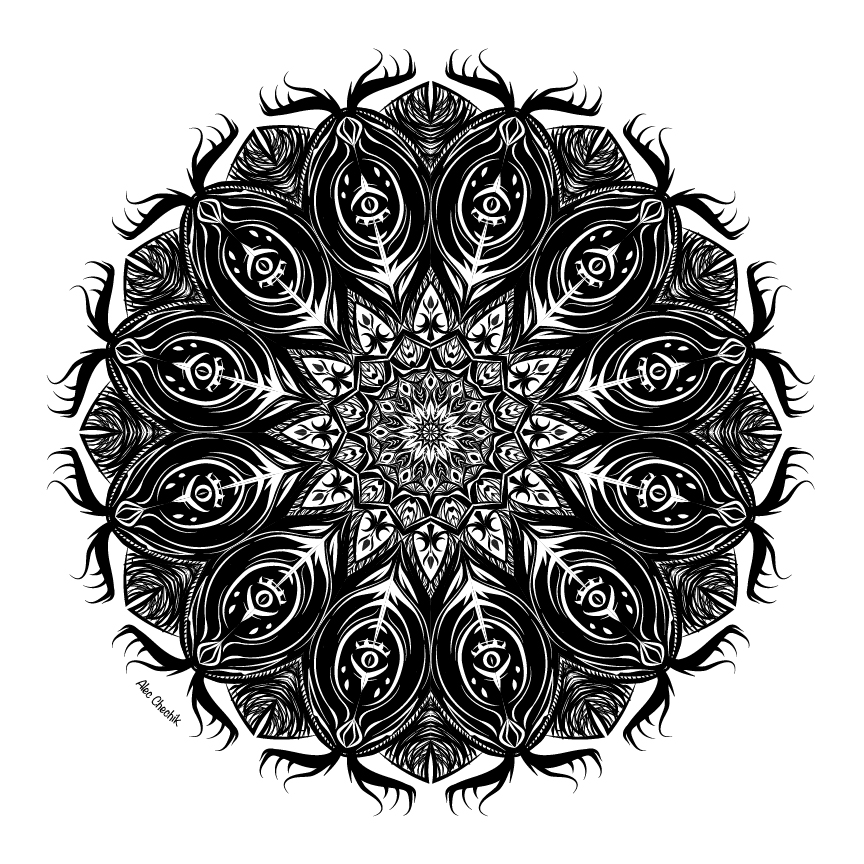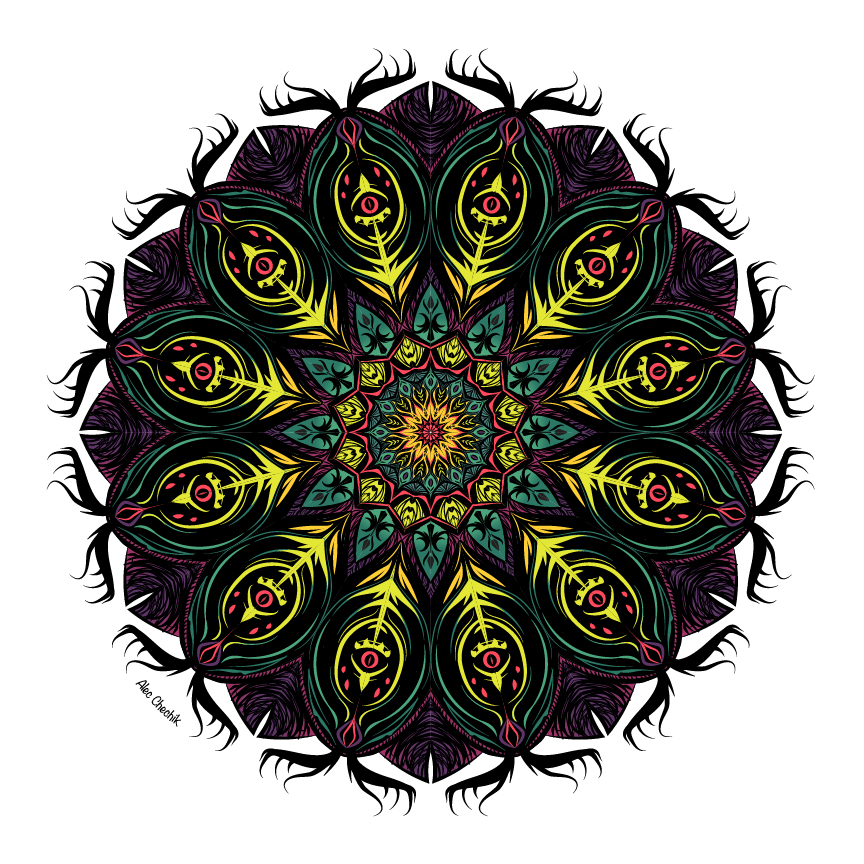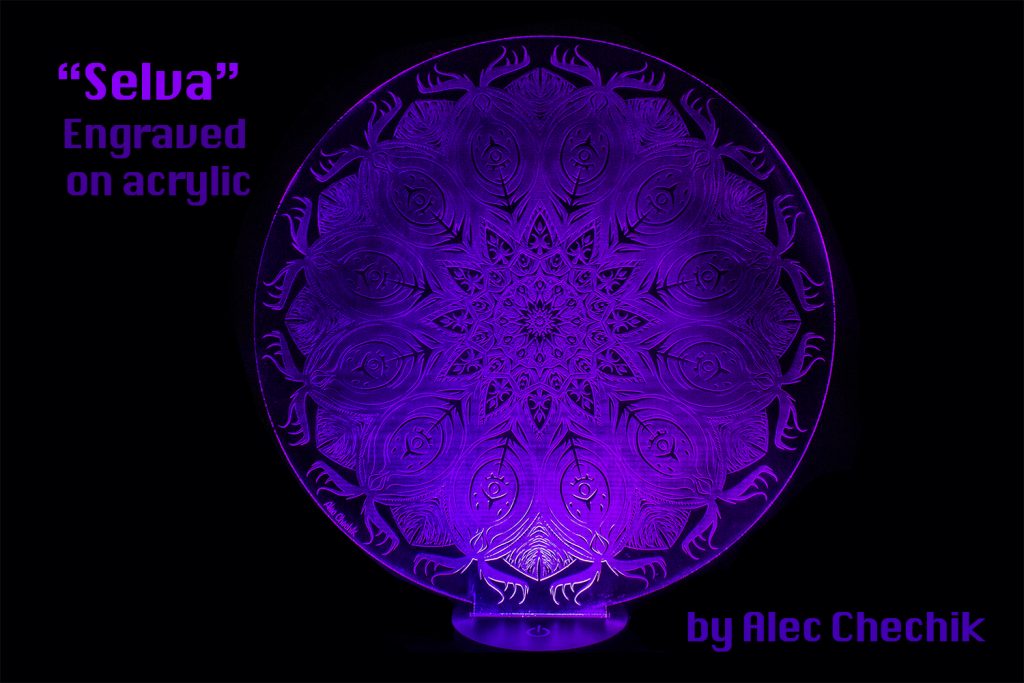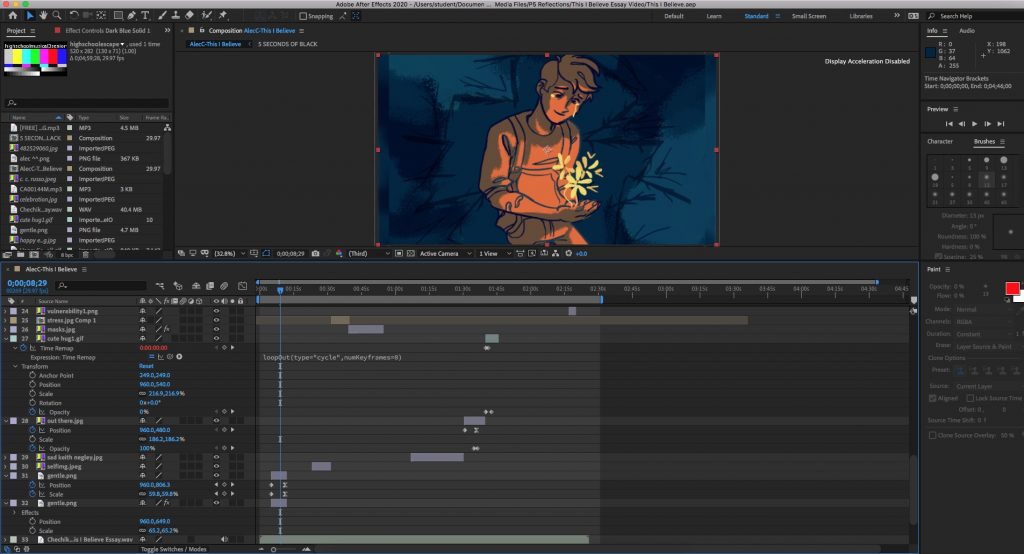Mandala: “Selva”
We created our own mandalas in Adobe Illustrator! It was a very relaxing and self-reflecting process since we had some pretty relaxed guidelines. As long as we followed the templates, made a design we put effort into, and had fun creating, it would be fine. We ended up with black and white and colored mandalas and a video that depicted our stroke-by-stroke Illustrator process.



While creating my personal mandalas, I valued having the opportunity to let go and focus on nothing other than me and the drawing for a period of time. I found it relaxing, especially because of how symmetric it is, but I think I obsessed a bit with getting the lines just right. For the colored mandala, being able to use color really helps you tell a story, since each color has a different meaning and feel to it, and the combination of hues greatly affects the overall mood of your mandala. I had a lot of fun making contrasting areas by using black and bold colors! However, I also liked how bold and simple the black and white one is.
My personal mandalas reminded me of how often I overthink my works: throughout the process I found myself deleting lines, again and again, discarding ideas and sections, switching colors around multiple times, and altering the smallest details. I might need to stop overthinking and simply let things flow. On the other hand, I also realized I completely neglected the circular guidelines we had set in the mandala templates and instead worked on my own design.
This I Believe Video
Our English class’s first project was the “This I Believe” essay, based on the series of pieces on a 1950s radio show with Edward R. Murrow which was continued by NPR in 2004. The authors would explain a particular belief they held and the experiences that supported it. In Digital Media, we edited a video based on an audio recording of the essay using After Effects, adding appropriate visuals and background music to support the narrative. I valued being able to openly talk about some of my key experiences and how they affected my belief in the strength of vulnerability.
Beyond The Saturated Screen
I believe in vulnerability as a sign of personal strength. It was through accepting my negative emotions that I realized displaying them in front of others doesn’t make one weak, but strengthens us as people. We often try to hide what is going wrong in our lives and the parts of ourselves we dislike, like when we selectively post pictures online of our happy moments or our favorite, most flattering selfies. It is common to obsess over projecting the “ideal” version of ourselves, when in fact all we are doing is becoming more insecure in our identities.
“The ideal me is happy. The ideal me is confident. The ideal me isn’t struggling. The ideal me is cisgender.” These are some of the thoughts I had when I was living a lie. I was 12, edging on 13, when I was trying to live up to the expectations of the perfect studious little girl others had of me and I had adopted for myself. In my mind, it was similar to playing a role in the preteen Disney movies I grew up watching: as long as every scene was saturated in color, the soundtrack was lighthearted, and everyone played their part, the illusion of a happy narrative would be kept intact. I wasn’t sure of what I wanted, but I knew I despised the made up movie I was in. I would cry myself to sleep every few days because of it. But always kept it to myself.
I kept it a secret for almost a year until I couldn’t anymore. I remember breaking down crying in my bed because of how frustrated and downright scared I was of this divergence in the script, and between tears and sobs telling my mom I wasn’t a girl. In that moment, I felt so vulnerable; as if I had ripped my heart out for her to see and do as she pleased with. Luckily, instead of wrecking it with hostility, she wrapped me in her arms and told me it was okay. That was one of the many heartfelt talks I would have with my family. I had finally broken out of the low budget Disney Channel film I had been previously confined to, and realized how much courage it took to show a part of myself I didn’t feel secure in.
Nowadays, I feel confident in my own person. I believe that by sharing my struggles with others, I have grown to become more knowledgeable of my own emotions and build stronger connections with those around me. I no longer attempt to play an idealized version of myself. Instead, I try to be as open and honest as I can be with those I feel safe with, and that has allowed me to form resilient friendships based on trust and understanding. But, hey, if I ever get a role in the latest High School Musical movie, there’s no way in hell I’m turning it down.
